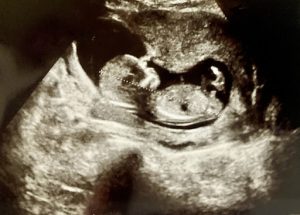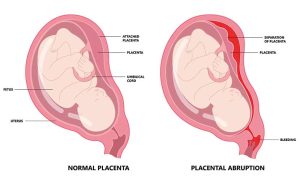Summary of this Article
Gestational diabetes is a mild glucose tolerance abnormality that is discovered or developed for the first time during pregnancy in women who were not diabetic before pregnancy. During pregnancy, managing gestational diabetes can be challenging due to difficulties in exercising and using medication, making dietary management crucial for treatment. The caloric intake during pregnancy should be calculated as “standard weight × 30kcal,” and based on this calculated caloric intake, it is recommended to consume a balanced diet.
What is Gestational Diabetes?
Gestational diabetes is a mild glucose tolerance abnormality discovered or developed for the first time during pregnancy in women who were not diabetic before pregnancy.
According to the definitions of the “Japan Diabetes Society,” the “Japan Society of Diabetes and Pregnancy,” and the “Japan Society of Obstetrics and Gynecology,” it is defined as follows:
“A glucose tolerance abnormality discovered or developed for the first time during pregnancy that does not reach the level of diabetes. It does not include apparent diabetes during pregnancy or pregnancy complicated by diabetes.”
Glucose tolerance abnormality means that blood sugar levels cannot be properly controlled.
Although it is named diabetes, it is not as severe as diabetes.
If diabetes is diagnosed during pregnancy, it is considered pregnancy complicated by diabetes rather than gestational diabetes.
The tests conducted to diagnose gestational diabetes are mainly blood tests.
Blood tests include random blood glucose measurement, fasting blood glucose measurement taken when no food has been consumed, and oral glucose tolerance tests conducted after consuming glucose.
It is recommended to test for gestational diabetes as early as possible after pregnancy and around mid-pregnancy (14 weeks and 0 days to 27 weeks and 6 days).
The issue with gestational diabetes is not only poor blood sugar control.
Poor blood sugar control increases the likelihood of adverse effects on both the mother and the baby.
Complications with increased risk due to gestational diabetes include the following:
- Miscarriage
- Preterm birth
- Pregnancy-induced hypertension
- Polyhydramnios
- Fetal death
- Fetal congenital abnormalities
- Fetal malformations
- Neonatal hypoglycemia
- Neonatal cardiomyopathy
- Macrosomia (large baby), etc.
Additionally, it has been reported that babies born to mothers with gestational diabetes have a higher risk of developing obesity, metabolic syndrome, and diabetes in the future.
Therefore, gestational diabetes is one of the conditions that should be carefully managed to ensure the birth of a healthy baby.
Causes of Gestational Diabetes
The cause of gestational diabetes is believed to be related to an increased tendency for blood sugar levels to rise during pregnancy.
The reason blood sugar levels tend to rise is that the placenta, which is connected to the baby by the umbilical cord, secretes hormones that inhibit insulin.
Insulin is a hormone that lowers blood sugar levels. When insulin is not sufficiently secreted or does not function properly, it becomes difficult to lower blood sugar levels.
In other words, compared to normal times, the hormones secreted by the placenta during pregnancy make it harder to control blood sugar levels.
Therefore, it is believed that gestational diabetes, characterized by high blood sugar levels during pregnancy, occurs due to these changes.
Who is Prone to Gestational Diabetes?
People who are more likely to develop gestational diabetes often have the following characteristics:
- Family history of diabetes
- Obesity
- Advanced maternal age (35 years or older)
- Previous birth of a baby diagnosed as macrosomic (large baby)
- History of unexplained habitual miscarriages or preterm births
- History of unexplained perinatal death
- History of delivering a baby with congenital malformations
- Pregnancy-induced hypertension
- Polyhydramnios
However, having these characteristics does not necessarily mean that one will develop gestational diabetes.
According to the Japan Endocrine Society, the prevalence of gestational diabetes among all pregnant women is reported to be 12.08%.
Dietary Management During Pregnancy
For general diabetes, treatment typically involves three main approaches: medication, exercise, and dietary management.
However, during pregnancy, it can be challenging to use medications and exercise, making dietary management crucial for treating gestational diabetes.
Here, we will provide a detailed explanation of dietary management during pregnancy.

Dietary Management and Caloric Intake in Early Pregnancy
During pregnancy, the basic caloric intake is calculated as “standard weight × 30kcal.”
The standard weight is determined using the formula “height (m) × height (m) × 22.”
For example, if a person is 160 cm tall, the calculation would be “1.6(m) × 1.6(m) × 22 = 56.3(kg),” making the standard weight 56.3 kg.
Applying the standard weight to the caloric intake during pregnancy, it would be “56.3(kg) × 30kcal = 1689kcal.”
However, this caloric intake applies to those who are overweight.
For non-overweight pregnant women, caloric intake is increased based on the weeks of pregnancy.
In early pregnancy, an additional 50kcal is added.
Using the calculated caloric intake as a base, it is important to consume a balanced diet.
Additionally, it is crucial to ensure adequate intake of vitamins and minerals, such as folic acid, which are important for the baby’s development.
NIPT (Non-Invasive Prenatal Testing) Can Be Taken Early in Pregnancy
In addition to the risks to the baby from gestational diabetes, there are also risks of chromosomal abnormalities such as Down syndrome, Edwards syndrome, and Patau syndrome for the baby to be born.
The test to check for such chromosomal abnormalities is called NIPT (Non-Invasive Prenatal Testing), and it can be taken early in pregnancy.
Dietary Management and Caloric Intake in Mid-Pregnancy
The caloric intake during mid-pregnancy for overweight individuals is calculated the same way as during early pregnancy.
On the other hand, for non-overweight individuals, the additional caloric intake increases from 50kcal to 250kcal.
Dietary Management and Caloric Intake in Late Pregnancy
The caloric intake during late pregnancy for overweight individuals is calculated the same way as during early and mid-pregnancy.
For non-overweight individuals, the additional caloric intake increases from 250kcal to 450kcal.
However, the caloric intake and dietary management introduced here are general guidelines for dietary therapy.
Depending on the individual, it may be better to further restrict caloric intake, or conversely, to increase it.
Therefore, it is advisable to consult with a doctor about dietary management and caloric intake during pregnancy.
If You Are Diagnosed with Gestational Diabetes
If diagnosed with gestational diabetes, it is necessary to follow the doctor’s guidance for treatment and control blood sugar levels.
Here, we will take a detailed look at how to manage and respond when diagnosed with gestational diabetes.
Review Your Meal Plans
If diagnosed with gestational diabetes, it is important to review your meal plan.
Excessive calorie intake or high blood sugar levels can increase the risks associated with gestational diabetes.
Therefore, if your meal plan is unbalanced, it is crucial to revise it to help control your blood sugar levels.
Recommended Foods
There are no specifically defined foods that must be eaten when diagnosed with gestational diabetes.
The key is to maintain a balanced diet within the required caloric intake range.
Foods to Avoid
There are also no specifically defined foods that must be avoided when diagnosed with gestational diabetes, just like the recommended foods.
However, it is advisable to limit foods high in sugar, such as juices and cakes, as they can worsen blood sugar control.
Increase the Number of Meals
Even if you are eating three balanced meals a day, if your blood sugar levels are still difficult to control, increasing the number of meals can be an effective method.
This approach of increasing meal frequency is known as divided eating.
What is Divided Eating?
Divided eating involves increasing the number of meals from three to six per day by reducing the portion size of each meal.
By decreasing the amount of food in each meal and shortening the time between meals, it is expected to help prevent sudden changes in blood sugar levels.
Divided eating does not mean having the same type of food for all meals; instead, it involves adding three snacks to the regular breakfast, lunch, and dinner.
Is It Okay to Eat Snacks?
Snacks are fine to eat as long as they fall within your caloric intake range.
However, it is best to limit foods that are high in calories or contain a lot of sugar.
Precautions When Eating Out
When dining out, it is important to be cautious about not consuming too many calories.
Generally, restaurant food tends to be heavily seasoned to taste better, and it often contains more carbohydrates and fats.
As a result, you may unknowingly consume more calories than expected compared to meals you prepare yourself.
When eating out, check if the menu provides calorie information or choose restaurants that offer healthy meal options.

Do You Need to Pay Attention to Your Diet After Pregnancy?
Many women with gestational diabetes find that their blood sugar levels return to normal after giving birth.
However, it has been reported that women who have had gestational diabetes are 7.43 times more likely to develop type 2 diabetes in the future compared to those who have never had gestational diabetes.
Therefore, women who have had gestational diabetes should be mindful of their diet even after childbirth to avoid abnormal blood sugar levels in future checkups.
The recommended caloric intake for overweight individuals remains “standard weight × 30kcal,” similar to during pregnancy.
For non-overweight individuals, the base is also “standard weight × 30kcal,” with an additional 350kcal during the breastfeeding period when energy expenditure is higher.
Conclusion
Gestational diabetes is a glucose tolerance abnormality discovered or developed for the first time during pregnancy that does not reach the level of diabetes.
Often, there are no immediate visible symptoms, but if left untreated, there is a high risk of adverse effects on both the mother and the baby.
Therefore, it is important to receive appropriate treatment if diagnosed with gestational diabetes.
Under a doctor’s guidance, refer to the recommended caloric intake and dietary management discussed here to carefully monitor and control blood sugar levels.
【References】
- Diabetes Treatment Guidelines 2019 – Abnormal Glucose Metabolism in Pregnant Women
- Japan Society of Obstetrics and Gynecology – Gestational Diabetes
Article Editorial Supervisor

Dr Hiroshi Oka
NIPT specialist clinic, MD
Graduated from Keio University, School of Medicine
 中文
中文






















